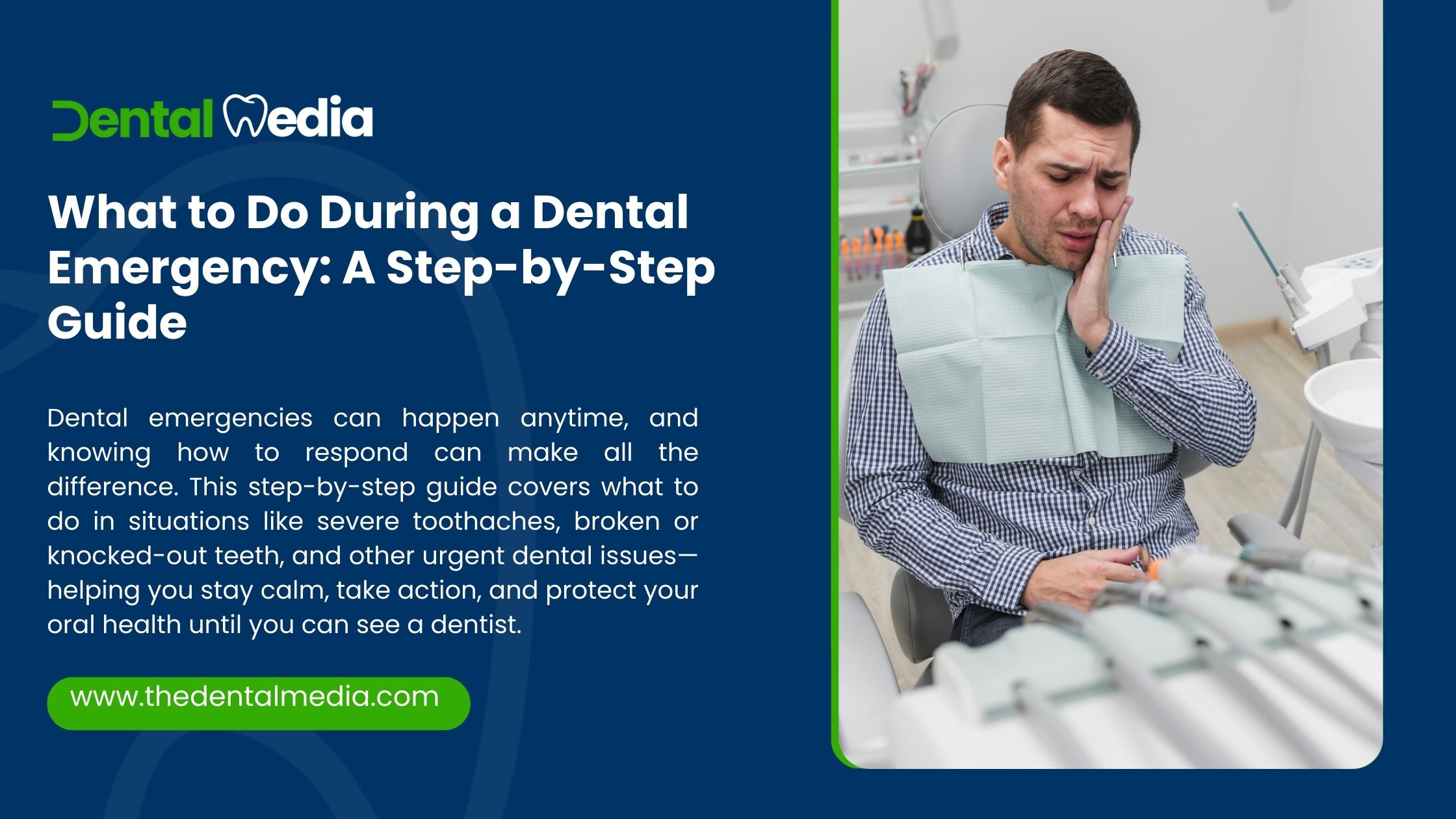Dental emergencies can happen without warning—whether it’s a knocked-out tooth during a soccer game, a sudden toothache that wakes you in the middle of the night, or a broken crown just before an important meeting. These situations are not only painful but can also cause long-term damage if not handled correctly. Knowing what to do in the first few minutes of a dental emergency can make a significant difference in preserving your oral health and preventing further complications.
In this comprehensive guide, we’ll walk you through the most common dental emergencies and what immediate actions you should take to minimize pain, prevent infection, and increase the chances of successful treatment.
What is Considered a Dental Emergency?
Before taking action, it’s important to determine whether your situation qualifies as a dental emergency.
Common Dental Emergencies Include:
- Knocked-out (avulsed) tooth
- Cracked or broken tooth
- Severe toothache or pain
- Abscessed tooth (infection)
- Lost filling or crown
- Injuries to the soft tissues of the mouth (gums, tongue, cheeks)
- Objects stuck between teeth
Signs That Require Immediate Dental Care:
- Uncontrolled bleeding
- Intense, throbbing pain
- Swelling in the face or jaw
- Pus or signs of infection (fever, foul taste, swelling)
- Difficulty breathing or swallowing (potential medical emergency)
Step-by-Step Guide for Common Dental Emergencies
Knocked-Out Tooth (Avulsed Tooth)
Act quickly—timing is critical. A tooth has the best chance of being saved if re-implanted within 30–60 minutes.
Steps to Take:
- Handle the tooth by the crown (top), not the root.
- If dirty, gently rinse with milk or saline. Avoid scrubbing or using soap.
- Try to reinsert it into the socket. Hold it in place by gently biting down on a clean cloth.
- If you can’t reinsert, store it properly:
- In a container of milk
- Inside your cheek (if the person is conscious and alert)
- In a tooth preservation product (like Save-a-Tooth)
- Get to a dentist immediately—preferably within 30 minutes.
Cracked or Broken Tooth
Cracks can range from minor chips to severe fractures.
Steps to Take:
- Rinse your mouth with warm water to clean the area.
- Apply a cold compress to the face to reduce swelling.
- If there’s bleeding, apply gauze with light pressure for 10 minutes.
- Avoid using the damaged tooth.
- Take over-the-counter pain medication (e.g., ibuprofen) if needed.
- Call your dentist immediately.
Severe Toothache
Tooth pain can indicate decay, an abscess, or a damaged nerve.
Steps to Take:
- Rinse your mouth with warm water.
- Use dental floss to remove any food stuck between teeth.
- Apply a cold compress to the cheek if swelling is present.
- Do NOT place aspirin directly on the gum or tooth. It can burn tissues.
- Take OTC pain relievers (not exceeding dosage instructions).
- Contact your dentist ASAP.
Abscessed Tooth (Infection)
An abscess is a serious condition that can spread infection to other areas of the body.
Signs Include:
- Severe pain
- Swollen gums
- Pus discharge
- Fever
- Bad breath or taste
- Swelling in the face or neck
Steps to Take:
- Rinse with a saltwater solution (1/2 tsp salt in 8 oz warm water) several times a day.
- Do NOT attempt to drain the abscess yourself.
- Use a cold compress for facial swelling.
- Seek emergency dental care. This is a high-priority issue.
Lost Filling or Crown
This can cause sensitivity or pain due to exposed tooth surfaces.
Steps to Take:
- If you have the crown, clean it and try to temporarily place it back using dental cement (available at pharmacies).
- Avoid hot, cold, or sugary foods to minimize sensitivity.
- Apply clove oil to the exposed area to reduce pain.
- Contact your dentist for permanent repair.
Soft Tissue Injuries (Lips, Gums, Tongue, Cheeks)
These injuries often involve bleeding.
Steps to Take:
- Rinse with warm saltwater.
- Apply pressure with a clean cloth or gauze.
- Use ice packs externally to reduce swelling.
- If bleeding doesn’t stop after 10-15 minutes, visit an emergency room or dentist.
Object Stuck Between Teeth
Steps to Take:
- Use dental floss gently to remove the object.
- Avoid using sharp instruments like pins or toothpicks.
- If unsuccessful, contact your dentist.
When to Visit the ER vs. the Dentist
Visit the Emergency Room if:
- You have facial trauma or fractures
- There’s uncontrolled bleeding
- You have difficulty breathing or swallowing
- The pain is unbearable and no dentist is available
Visit a Dentist if:
- The emergency is dental-specific but not life-threatening
- Pain or damage is localized to the teeth or gums
- There are signs of infection but no systemic symptoms
Preventing Future Dental Emergencies
Tips for Prevention:
- Visit your dentist regularly (every 6 months)
- Wear a mouthguard during sports or high-risk activities
- Avoid chewing hard items like ice, popcorn kernels, or pens
- Don’t use your teeth to open packages or bottles
- Maintain good oral hygiene to prevent decay and infection
What to Keep in a Dental Emergency Kit
A well-prepared dental emergency kit can be a lifesaver.
Include:
- Gauze pads and cotton balls
- Dental floss
- Temporary filling material
- Dental cement
- Salt packets
- Pain relievers (ibuprofen or acetaminophen)
- Cold compress or instant ice pack
- Clove oil
- A small container with a lid (for a knocked-out tooth)
For more help and support, feel free to contact us at TheDentalMedia.com.

